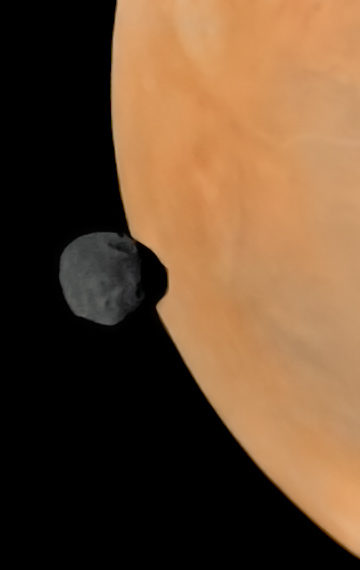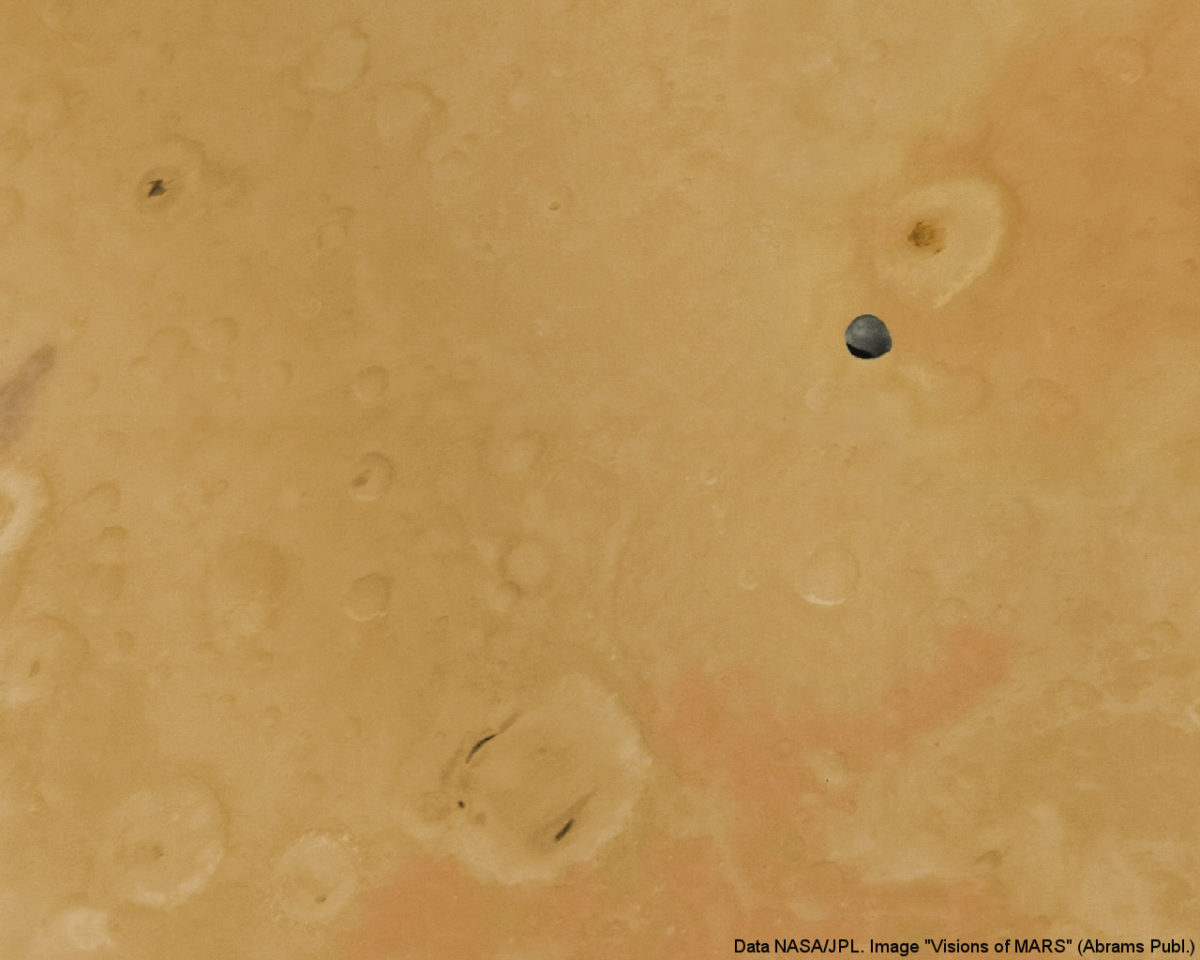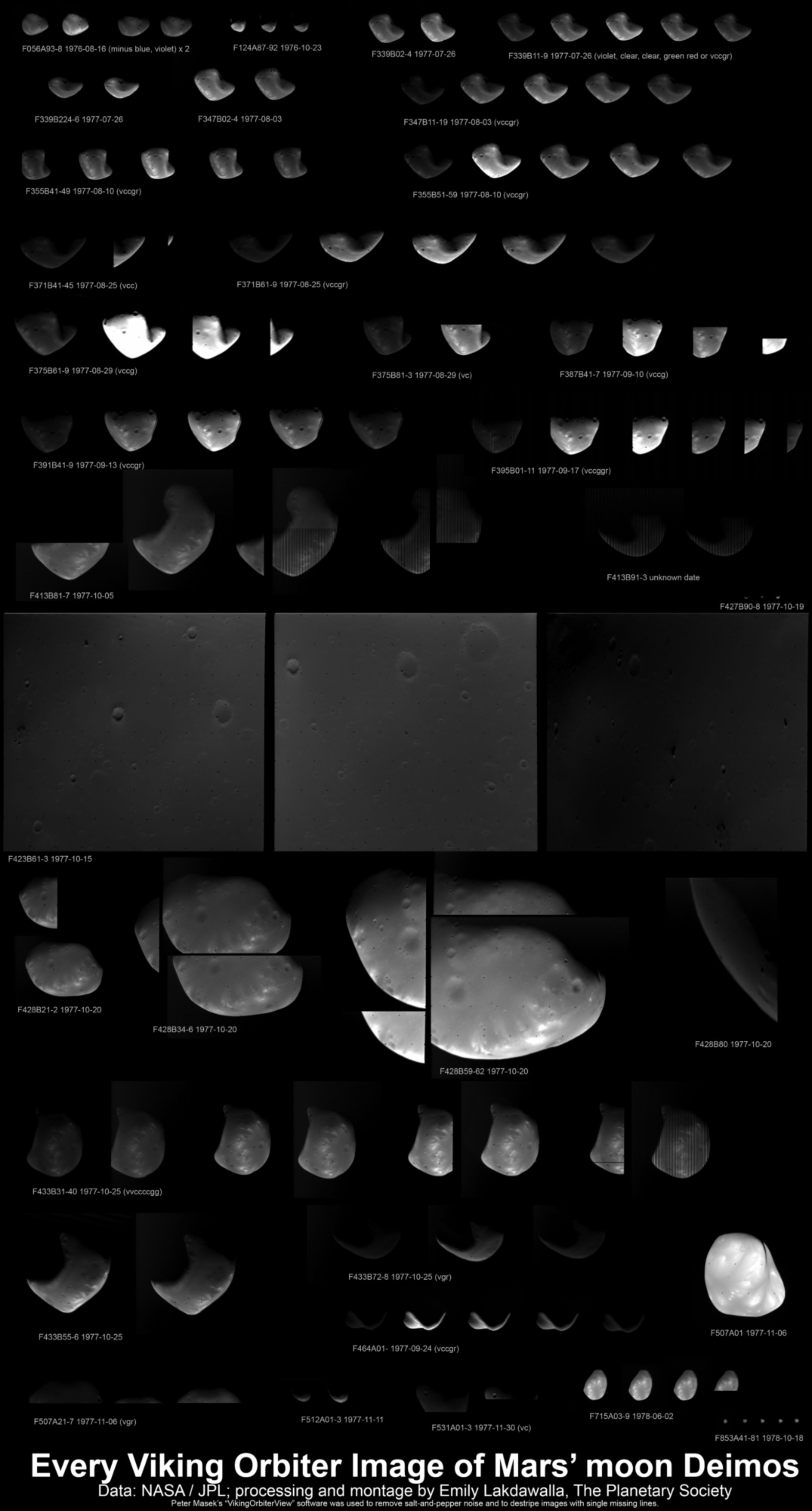Emily Lakdawalla • Feb 04, 2015
Mars Orbiter Mission images Mars' moons, including the far side of Deimos
There has not been very much news out of the Mars Orbiter Mission since the Siding Spring flyby last October. Today I'm excited to show you some previously unreleased images from Mars Orbiter Mission, containing Mars' moons Phobos and Deimos, which were also taken in October. Some of these photos were included in a Lunar and Planetary Science Conference abstract (PDF), which also mentioned that the Mars Colour Camera has returned a total of 250 images as of the time of the abstract submission. I contacted the Mars Colour Camera's head scientist, Ashutosh Arya, for permission to post the images of Mars' moons here, and he kindly shared these versions with me. According to a second abstract submitted to LPSC (PDF), the Mars Colour Camera team does eventually plan to make all images public in a format compatible with NASA's Planetary Data System, although they did not specify a schedule for the data release.
OK, to the pictures. First: Phobos, seen above and then crossing Mars' disk. We have much higher-resolution images of Phobos, of course, but it's so rare to see it in color, to see its rich dark brown against Mars' orange.


These photos remind me a lot of the ones from Phobos 2:

And now, here's Deimos from Mars Orbiter Mission. It's okay, I don't blame you if you're underwhelmed by these pictures; it looks like a wad of chewing gum. But stick with me and I'll explain why these pictures are significant. Arya sent me these four pictures:

I enlarged them 400% and stacked them to try to make something of them. If nothing else, the stacking reduced the artifacts of the Bayer color interpolation in the originals.

These photos don't look like much, but they are of a face of Deimos that we almost never see: the anti-Mars side, from a perspective just a little below the equator. (Many many thanks to Phil Stooke for helping me understand the orientation of this photo. Without him it would still look like a wad of chewing gum to me.)
Here, I made a little Vine to show you, employing my handy-dandy paper model of Deimos:
I know of only one other photo taken from a similar perspective:

Most Mars missions operate in orbits much lower than that of Deimos. Since Deimos keeps the same face pointed at Mars all the time, any spacecraft that orbits below it only sees the Mars-facing hemisphere; it never sees half of Deimos. Mars Global Surveyor, Mars Odyssey, Mars Express, Mars Reconnaissance Orbiter -- they always only see half of the moon. Even the Viking Orbiters, which reached periapses outside Deimos' orbit, usually saw the leading and trailing hemispheres. Mars Orbiter Mission, with its uniquely elliptical orbit reaching to 77,000 kilometers above Mars, does get to face the far side of Deimos. And it gets color photos! I fervently hope that they will be able to get some pictures of Deimos from closer range, to achieve a better color portrait of the far side of Deimos.
To place the Mars Orbiter Mission images in context, here are the best Deimos images from Mariner 9 (yes, Mariner 9 data is still relevant today, for Mars' outer moon):

And here is every single Viking Orbiter image targeted at Deimos. (It doesn't include sequences, like the color picture above, that were aimed at Mars but happened to have Deimos in the field of view.) This is what we are working with, when it comes to photographic maps of the far side of Deimos. Whatever Mars Orbiter Mission can add will be a bonus!

Let’s Go Beyond The Horizon
Every success in space exploration is the result of the community of space enthusiasts, like you, who believe it is important. You can help usher in the next great era of space exploration with your gift today.
Donate Today

 Explore Worlds
Explore Worlds Find Life
Find Life Defend Earth
Defend Earth

